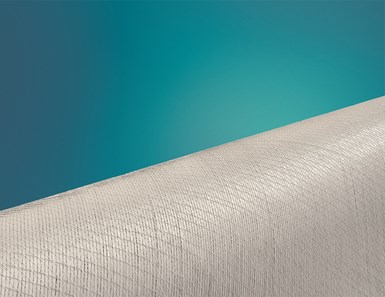SGL Carbon delivers composite materials for Airbus Helicopter rotor blades
SGL Carbon’s glass fiber noncrimp fabrics enable the composite rotor blades for the 5 blade Airbus H145 rotor configuration.

Source | Airbus
In August 2019, SGL Carbon (Wiesbaden, Germany) began delivering two special glass fiber noncrimp fabrics for the new version of Airbus Helicopters’ (Marignane, France) model H145. The materials are used in the new helicopter’s five-blade rotor. Developed in close collaboration with Airbus Helicopters, the material has been qualified for the application for the foreseeable future.

SGL Carbon’s glass fiber noncrimp fabrics enable the composite rotor blades for the 5 blade H145 rotor configuration. Source | SGL Carbon
Because of their unidirectional fiber orientation, the fabrics offer good resistance and support for the new geometry of the especially long H145 rotor blades. The fabrics are manufactured at the SGL Carbon site in Willich near Düsseldorf in a multi-stage process and delivered to Airbus Helicopters in Paris.
“The order emphasizes our growing presence in the aerospace business. With the fabrics for Airbus Helicopters, we have realized, qualified, and started serial production for a material concept for primary structural components for the first time,” says Dr. Andreas Erber, head of the aerospace segment in the business unit Composites – Fibers & Materials at SGL Carbon.
The current deliveries are part of a framework contract with Airbus Helicopters, intended to gradually intensify collaboration.
The new composite 5 blade rotor configuration for the H145 is said to offer 150 kilograms of additional useful load while also enhancing in-flight comfort, simplicity and connectivity.
Related Content
-
“Structured air” TPS safeguards composite structures
Powered by an 85% air/15% pure polyimide aerogel, Blueshift’s novel material system protects structures during transient thermal events from -200°C to beyond 2400°C for rockets, battery boxes and more.
-
First Airbus A350 crash confirmed in Haneda
Shortly after touch-down, a JAL A350-900 aircraft recently collided with a De Havilland Canada Dash 8. Exact circumstances are still unknown.
-
Welding is not bonding
Discussion of the issues in our understanding of thermoplastic composite welded structures and certification of the latest materials and welding technologies for future airframes.






